Towards the end of 2022, we asked charities, social enterprises and community organisations to tell us more about how they’ve been affected by rising energy costs.
We heard from 45 organisations who responded to the survey, from every corner of the UK, who shared the true impact of the rise in energy costs. In this blog, we explore five key takeaways from the results and what that means for the sector.
Who were our survey respondents?
Our survey respondents represented a diverse range of charities, social enterprises and community organisations from across the UK:
- Just over 1 in 3 organisations had secured social investment, while most had a profit margin of 0-10%.
- In terms of organisational turnover, we had a relatively even spread from between £0-£10K and £5m+ - with most sitting somewhere in between.
While our results represent a small proportion of the social sector as a whole, the responses provide some interesting insights into the various challenges facing charities and social enterprises due to the rising costs of energy.
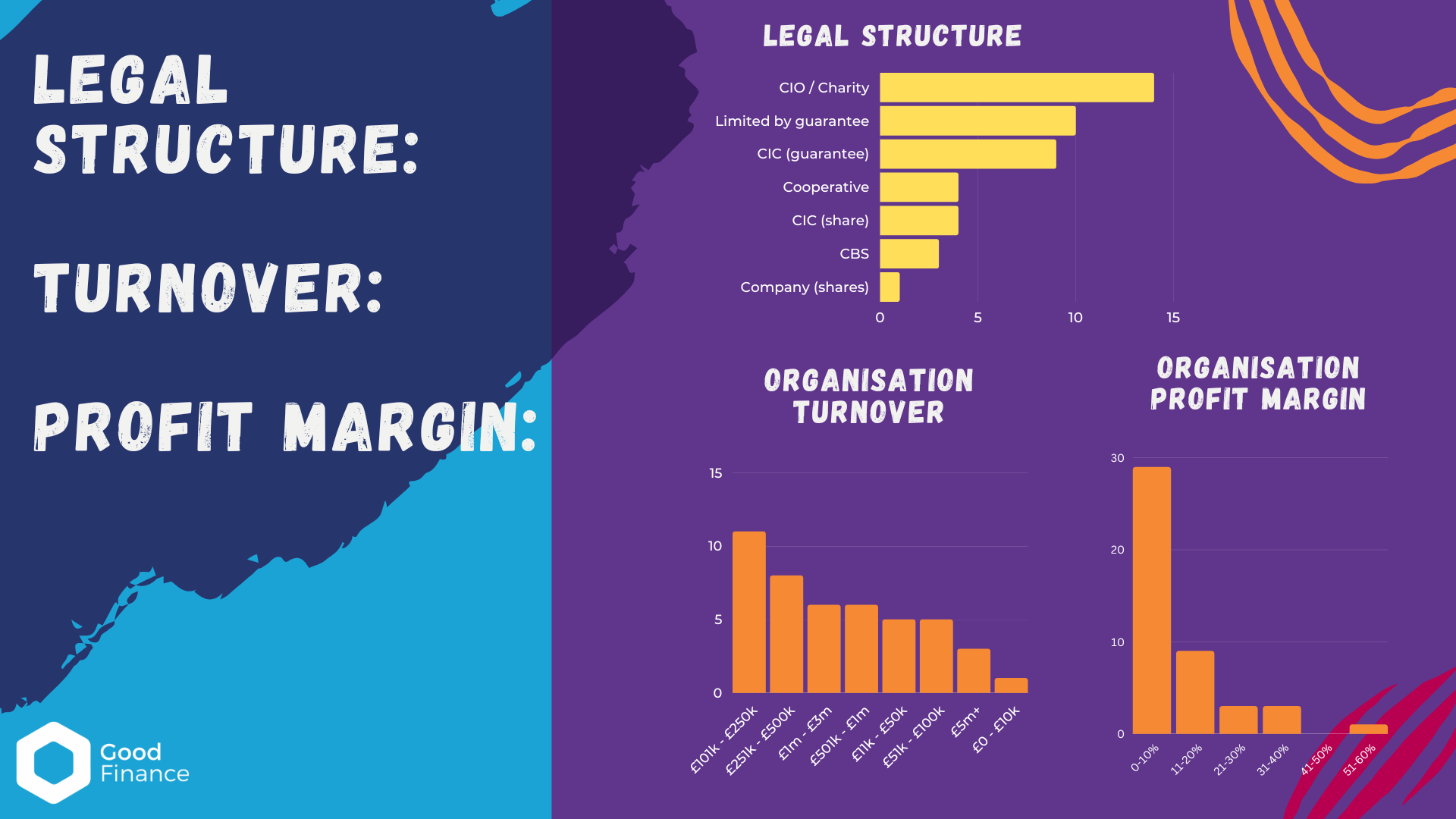
#1 More than half of surveyed organisations use both electricy and gas, while 40% use electricity only
It was a relatively even split between organisations that use both electricity and gas and those that use electricity only. Just 5% of respondents selected the ‘Other’ option, suggesting that very few charities and social enterprises are exempt from rising energy costs or have had the opportunity to invest in alternative forms of energy
On average, a unit of gas costs 4p/kWh (kilowatt hour) – while electricity costs on average of 16p/kWh. That means that electricity is four times the price of gas - but, there are other factors at play. The costs of installation, maintenance and other running expenses tend to be more favourable for electricity, which can sometimes have a lifetime guarantee, whereas a gas boiler will need to be replaced at least every 15 years, with significant cost.
For charities and social enterprises, unexpected costs can be pivotal. As the cost of living crisis unfolds vulnerable groups served by frontline organisations, often owning assets or whose business models are typically more impacted. Learn more about how communities are navigating the cost of living crisis.
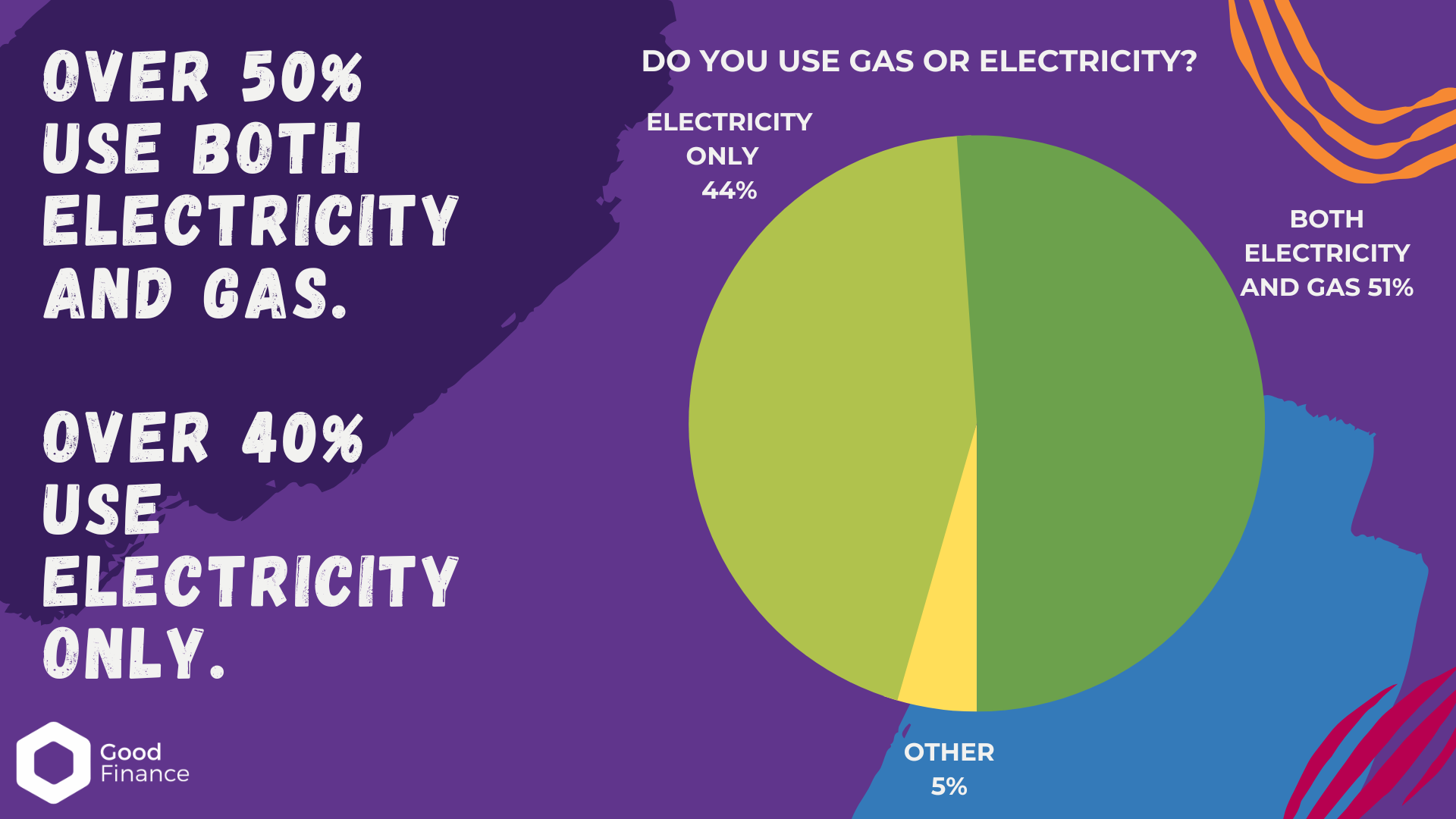
#2 Most organisations had fixed tariffs for both electricity and gas
The majority of organisations we surveyed had secured fixed tariffs for both electricity and gas, which is positive given the significant rise in energy costs in recent months.
That said, many highlighted that their fixed rate tariffs were set to expire in 2023, subjecting them to the current unfavourable variable rate. For these charities and social enterprises in the UK, it is unlikely you will find another cheaper alternative on a fixed rate, so the advice is generally to hold tight until at least March 2023, when the Energy Bill Relief Scheme is set to expire.
Several organisations - including Locality - are campaigning for the energy relief for charities to be extended beyond March. Learn more and support the movement via their campaign page.
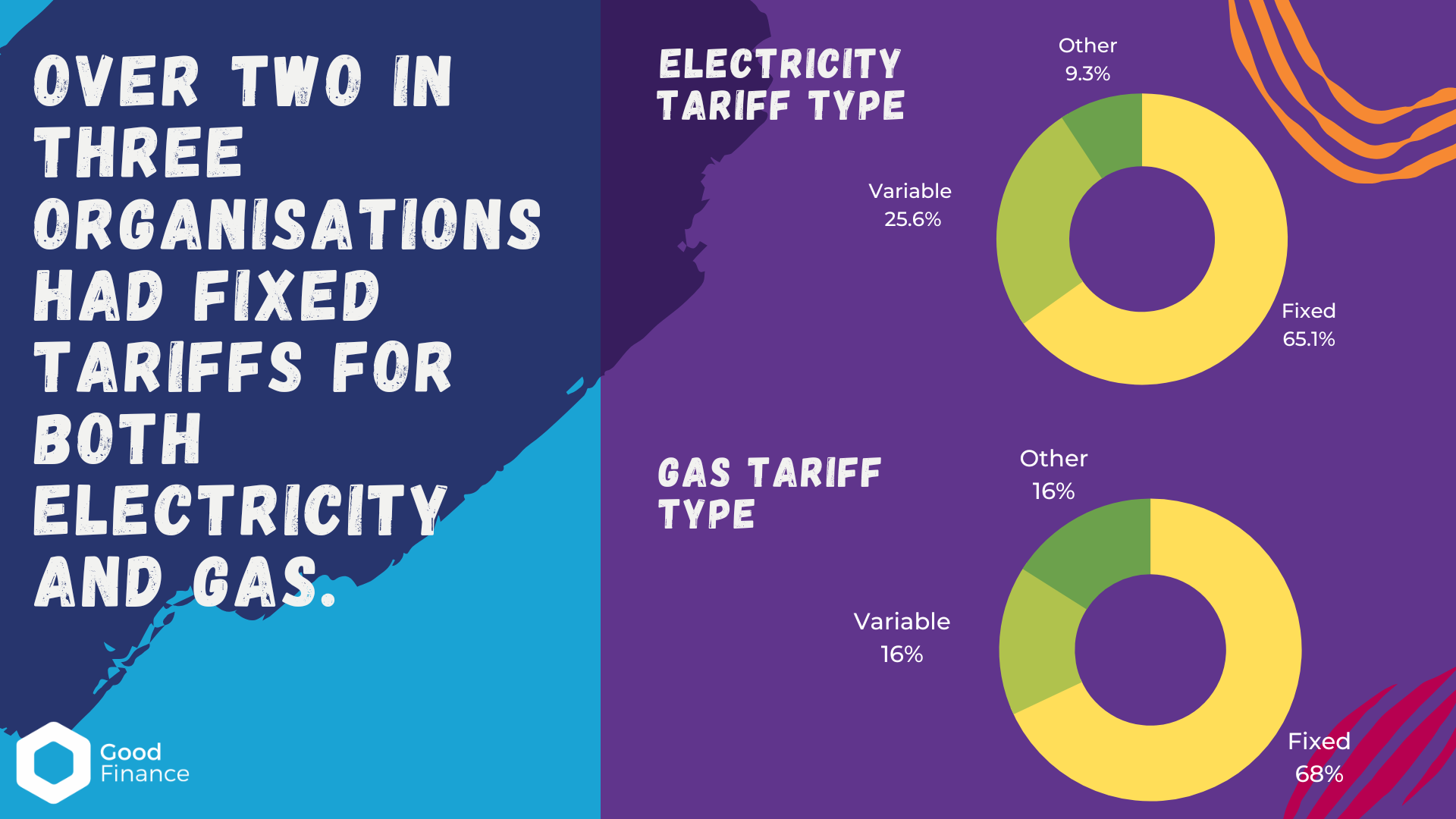
#3 Many were unable to successfully negotiate energy prices and the majority had not received any grant support
Less than a third organisations who responded were able to negotiate on the price of energy they pay, and nearly 90% had not received grant support of any kind to support them with the increase in costs as a result of rising energy bills.
Together, that creates somewhat of a perfect storm whereby organisations are paying above the board for their energy (the likes of which arguably unknown in this decade, or indeed, lifetime) with no additional or tailored financial support currently accessed and highlighting the fragility of business models operating on such thin profit margins.
With social sector organisations focusing on supporting the communities they serve, many are exploring other ways to finance the cost of utilities, including social investment.
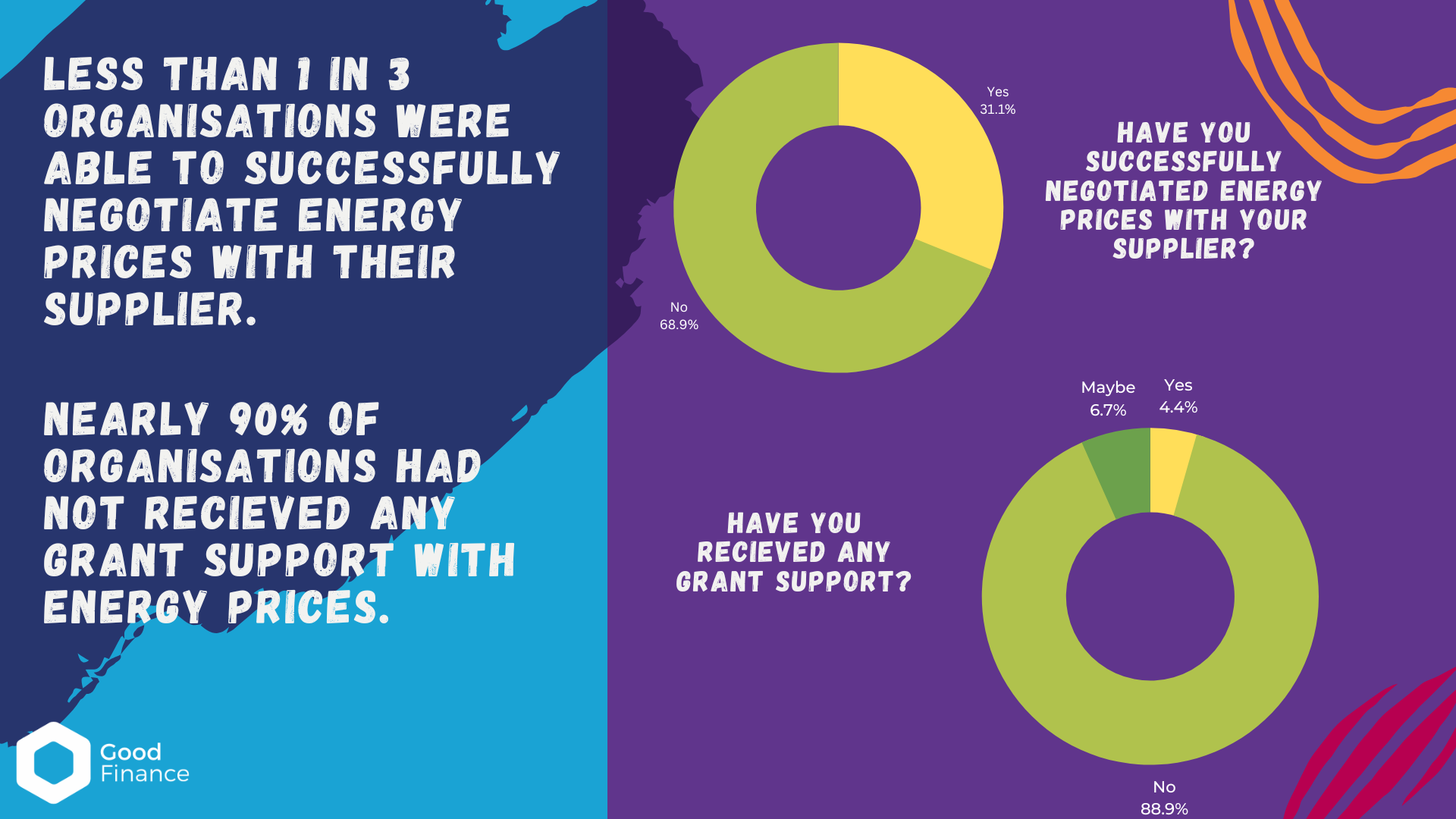
#4 Most organisations are expecting to see both short and long term impacts as a result of rising energy costs
Less than 5% of organisations we surveyed were not impacted at all by the volatility of energy prices, with most expecting to experience short and long term impacts.
This paints a bleak picture, but this is in fact reflective of society in 2023. Electricity prices in the UK rose by 65.4% and gas prices by 128.9% in the 12 months to December 2022. Energy price increases were some of the main drivers of the inflation rate last year.
For charities and social enterprises in particular, building financial resilience will be crucial. Reviewing your strategies and objectives regularly to ensure your work is still relevant and realistic in these fast-changing circumstances is key. Whether taking steps to minimise your energy usage or through actively searching for other potential revenue sources, there’s a number of ways you can prepare for both the short and long term effects.
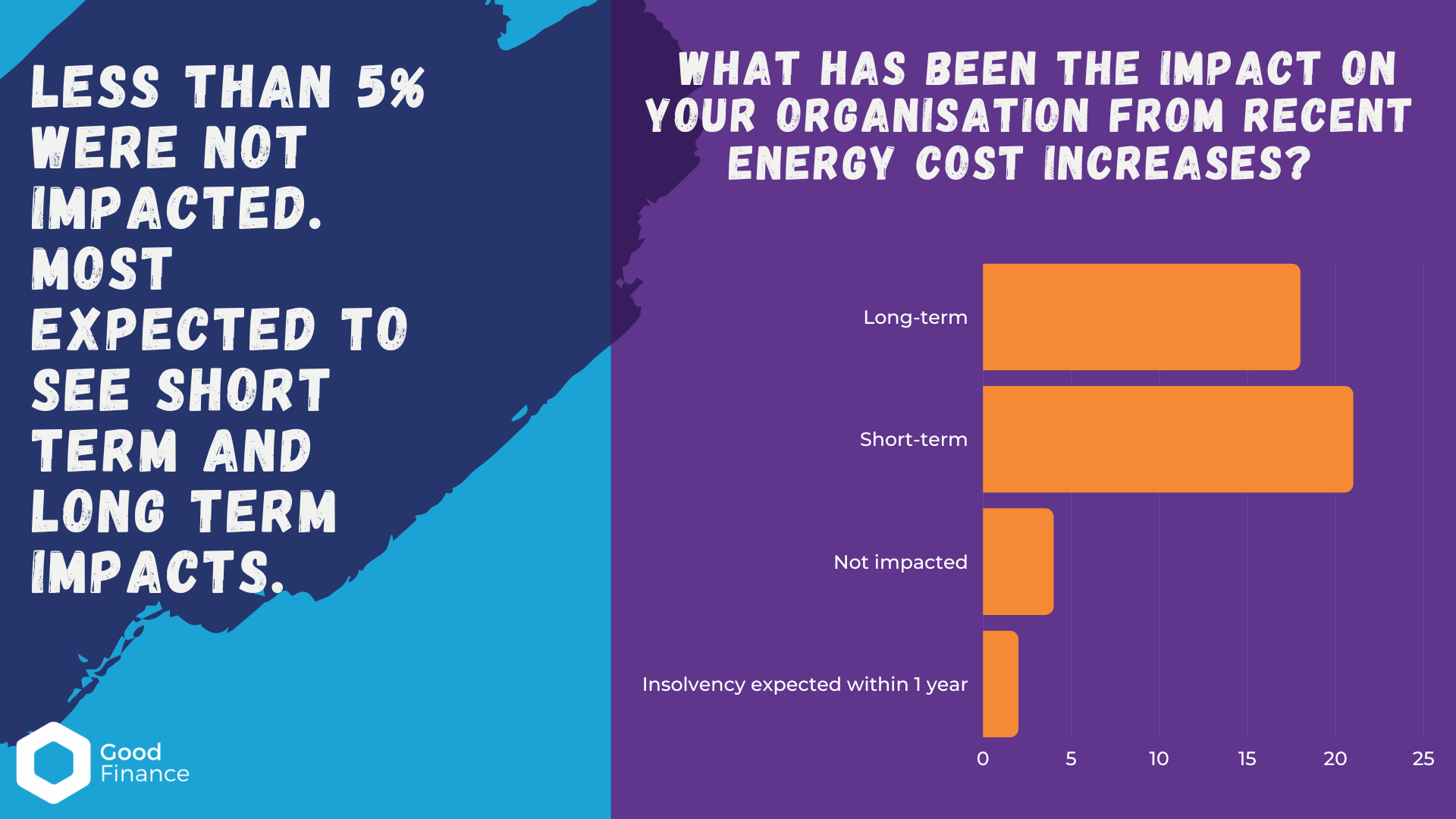
#5 More than 80% of organisations are interested in exploring measures to reduce energy bills
One of the most interesting and important findings from this survey is the appetite for energy reduction methods, with over 80% highlighting that they’re interested in such measures. The biggest barrier to this was, perhaps unsurprisingly, financial, but one in five organisations also stated other challenges while another one in five highlighted lack of knowledge as reasons for not implementing measures already.
This not only demonstrates the need for further investment in the area of energy resilience for charities and social enterprises, but is also telling of the sectors’ agility and willingness to pivot at pace.
If the global pandemic taught us anything, it’s the robustness of this sector and through diversification of energy production, organisations may be able to unlock a more sustainable solution for people and planet.
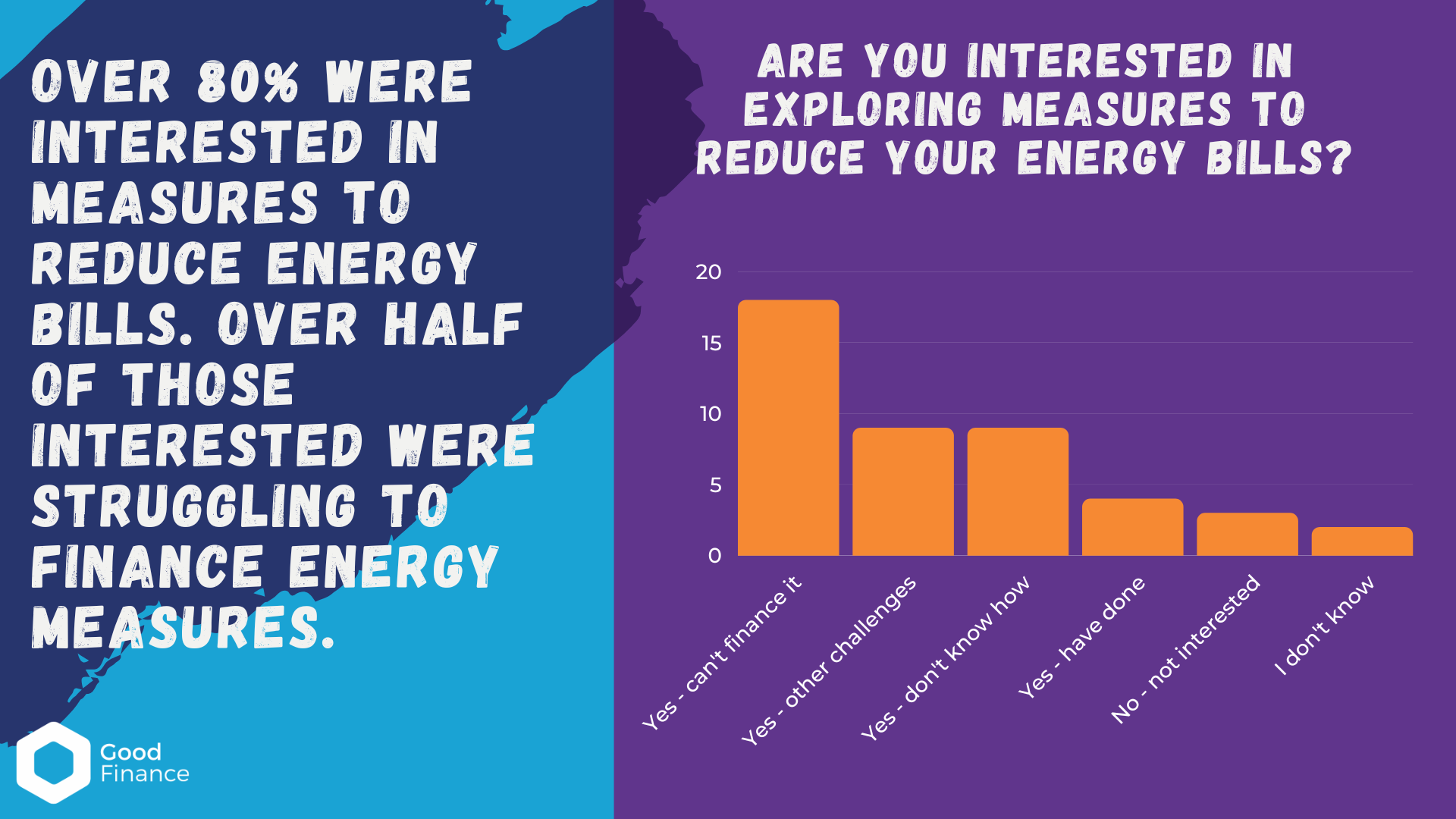
"There is a clear appetite in the sector to undertake further action on energy efficiency, if resources can be found to do so."
Lights Out, Proboeconomics
What’s next?
This data has been shared directly with Big Society Capital and a consortium of investors that are currently designing an Energy Resilience Fund, aiming to better support social sector organisations to navigate this increase in costs. If you're exploring social investment, access the Fundmapper tool to find social investors and advisors that are aligned with your values and objectives.
At Good Finance, we’ll keep you up to date with all the latest developments and opportunities of the fund.
In addition, we also asked what content topics on the Cost of Living crisis or energy prices that Good Finance could create that would be helpful for organisations during this time. Thanks to everyone for their fantastic suggestions, which include:
- Content on how to reduce energy costs for businesses
- Access to funding
- Acknowledgement of impact on rural areas
- Managing and retaining staff during times of uncertainty
And more! We'll be working our way through these suggestions and creating content that aligns with these wants and needs from you, our brilliant users.
Finally, congratulations to Arkbound Foundation CIO, who were the lucky winners of the Social Supermarket Hamper giveaway!
Helpful links for energy support:
-
Citizen's Advice - If your small business can't afford it's energy bills
-
Lime Green Consulting - How Charities and Social Enterprises can Respond to the Cost-Of-Living and Energy Crisis
-
Charity Finance Group - Net Zero and Charities
Helpful links for Cost-Of-Living Crisis support:
- NPC - Confronting the Cost of Living Crisis
- Locality - Cost of Living Support
- Social Enterprise Soctland - Cost of Living and Social Enterprise
